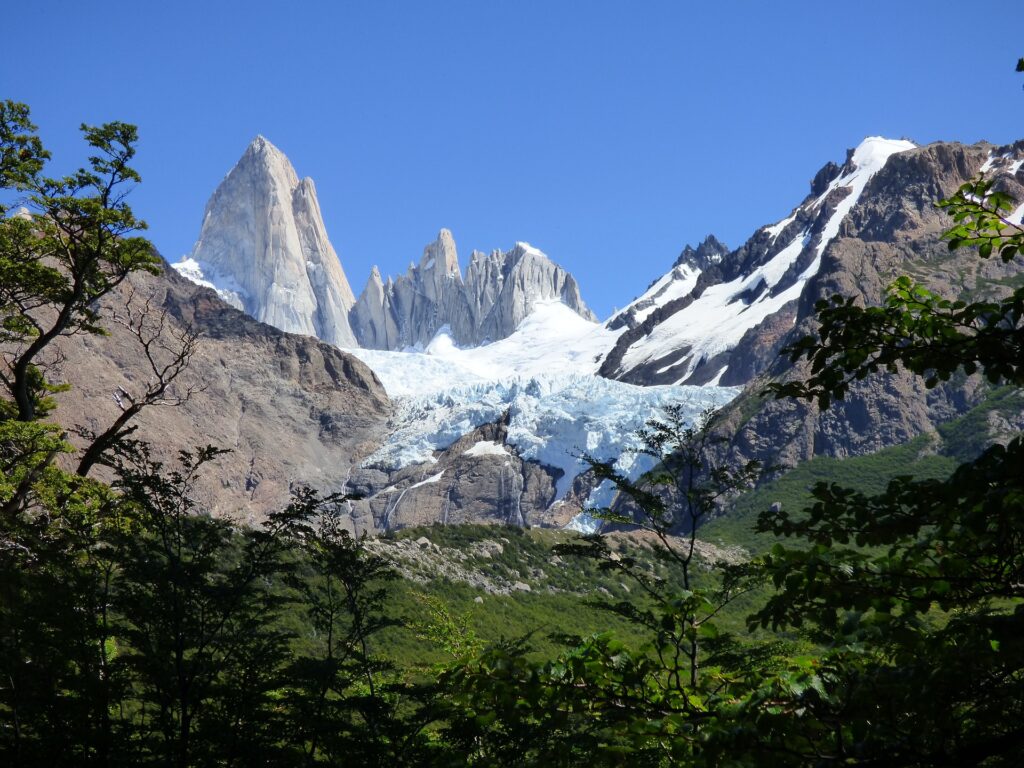
The best product : EMMA 😎
Patagonia is a region that has captured the imagination of explorers, adventurers, and travelers for centuries. This vast wilderness, which spans across the southernmost tips of Argentina and Chile, is a place of stunning natural beauty and rich history. It’s a land where towering mountains meet expansive steppe plains, where icy glaciers flow into crystal blue lakes, and where an intriguing past intersects with a vibrant present.
Patagonia’s geography is marked by the majestic Andes mountain range, the longest continental mountain range in the world. These mountains form a natural border between Argentina and Chile, stretching over 7,000 kilometers from Venezuela to the southern tip of South America. In Patagonia, the Andes are home to some of the most breathtaking landscapes on Earth, including:
East of the Andes lies the Patagonian Steppe, a vast plain that covers a large part of southern Argentina. This arid, windswept landscape is characterized by its flatness and lack of trees, making it a stark contrast to the rugged Andes. Despite its harsh conditions, the steppe is home to a variety of wildlife, including guanacos (a relative of the llama), armadillos, and the Andean condor.
Patagonia is also known for its impressive glaciers and ice fields. The Southern Patagonian Ice Field is the third largest reserve of fresh water in the world, feeding dozens of glaciers in the region. Among them is the Perito Moreno Glacier, one of the few advancing glaciers in the world and a popular tourist attraction.
The history of Patagonia begins with its indigenous peoples. The region was home to several groups, including the Tehuelche, Selk’nam, Haush, and Yaghan peoples. They adapted to the harsh conditions of Patagonia, hunting guanacos, gathering plants, and developing a rich cultural tradition that included storytelling, art, and spiritual rituals.
The arrival of European explorers in the 16th century marked a turning point in Patagonia’s history. Ferdinand Magellan was among the first Europeans to explore the region, naming it ‘Patagonia’ after the large footprints he found, allegedly belonging to the indigenous people. Over the next centuries, other explorers followed in his footsteps, mapping the landscape and establishing contact with the indigenous peoples.
In the 19th century, European settlers began to colonize Patagonia, bringing with them their customs, languages, and religions. This period was marked by conflict and displacement of the indigenous peoples, who struggled to maintain their traditional way of life. In the 20th century, Patagonia became a hub for outdoor tourism, attracting travelers with its stunning landscapes and adventure opportunities.
Patagonia’s coastal areas and surrounding waters are teeming with marine life. A boat trip or a visit to one of the many coastal reserves may reward you with sightings of:
On land, Patagonia’s diverse environments support a variety of wildlife, including:
In the late 19th century, a group of Welsh settlers arrived in Patagonia in search of a place where they could preserve their culture and language. They founded several settlements, including the town of Gaiman, which is known for its traditional Welsh tea houses. Today, the Welsh language is still spoken in some parts of Patagonia, and the region’s Welsh heritage is celebrated with festivals and other cultural events.
The gauchos, the cowboys of South America, have been a part of Patagonia’s cultural fabric since the 18th century. These skilled horsemen and cattle herders played a key role in the development of the region. Today, their legacy can be seen in the annual rodeos, folk music, and traditional asado barbecues that are a big part of Patagonian culture.
As we look to the future, conservation is a key concern in Patagonia. The region’s unique ecosystems are under threat from climate change, overfishing, and other human activities. However, efforts are being made to protect Patagonia’s natural and cultural heritage. National parks and reserves have been established, sustainable tourism practices are being promoted, and indigenous communities are being involved in conservation efforts.
Patagonia is a land of extremes – extreme beauty, extreme weather, and extreme adventure. Its geography ranges from towering mountains to expansive plains, from icy glaciers to windswept coasts. Its history is a tapestry of indigenous cultures, European explorers, and settlers from far-flung corners of the world. And its future lies in the balance, as efforts are made to preserve this unique region for generations to come.
Whether you’re trekking in the shadow of the Andes, watching whales off the coast, learning about the region’s rich history, or simply soaking up the breathtaking landscapes, a journey through Patagonia is an unforgettable experience. It’s a place that invites you to explore, to connect with nature, and to step back in time. And it’s a place that, once visited, is never forgotten.